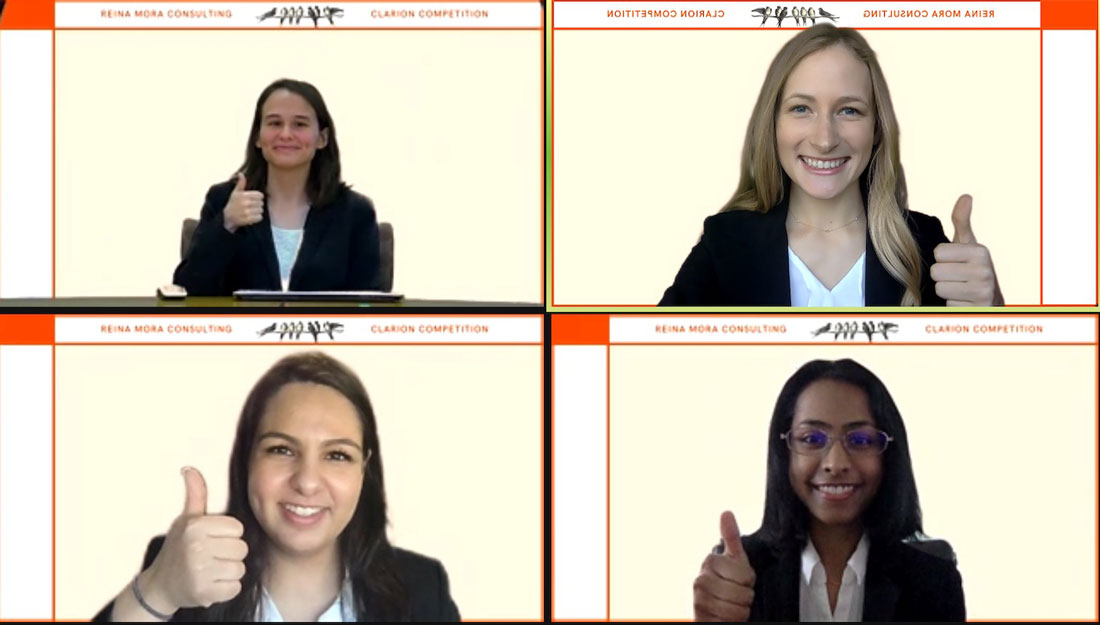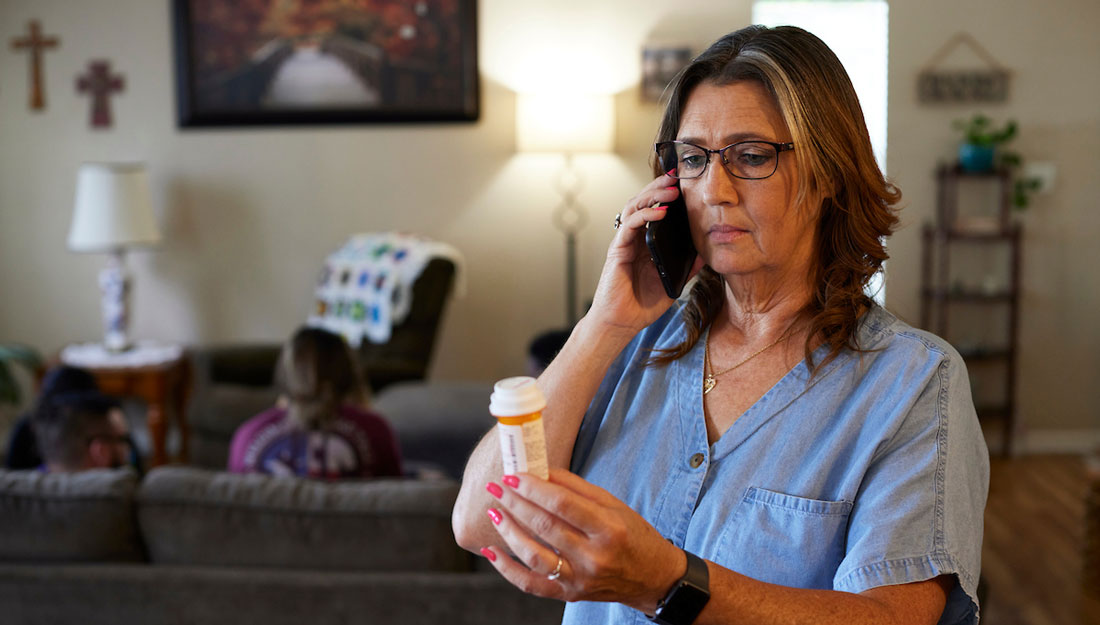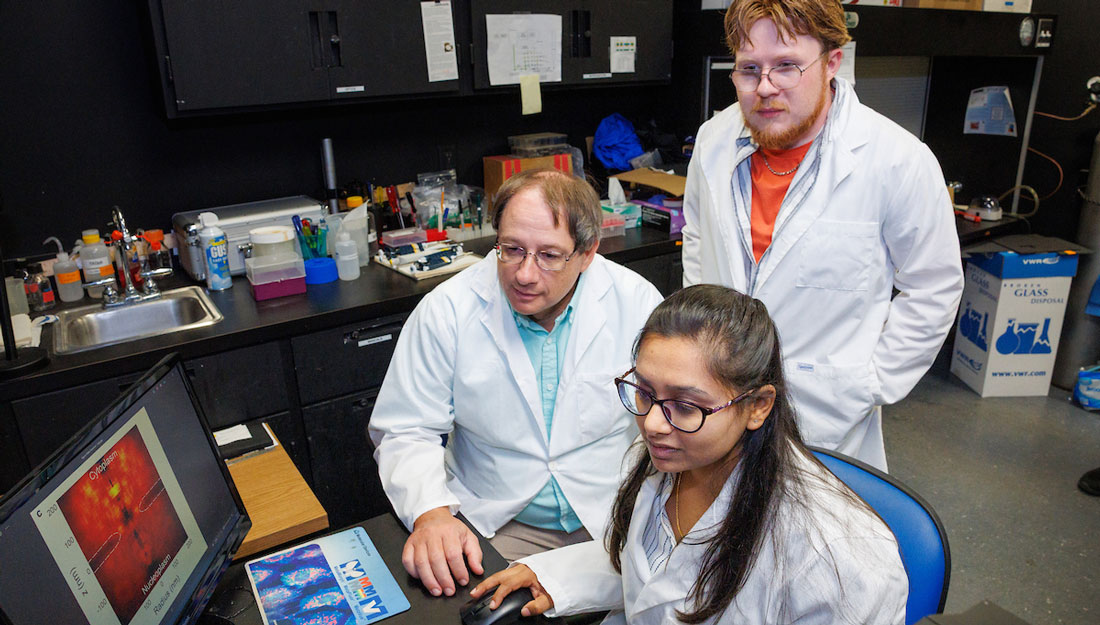- Lindsey Hendrix
- Medicine, Medicine Awards and Honors, Nursing, Pharmacy, Public Health, Show on VR homepage
Texas A&M Health students win national health care competition
An interprofessional team of health profession students took the top prize for their solution to a simulated health problem

Blanca Brosig from the School of Public Health, Kathleen (Koenig) Riba from the College of Nursing, Katlyn Kuruda from the Irma Lerma Rangel College of Pharmacy and Teja Veerati from the College of Medicine won the 2021 CLARION National Interprofessional Case Competition on April 10 with their proposal called the Pa'lante Project.
A team of students from Texas A&M University Health Science Center (Texas A&M Health) placed first in the 2021 CLARION National Interprofessional Case Competition hosted virtually by the University of Minnesota on April 10. Members of the winning team are Blanca Brosig from the School of Public Health, Kathleen (Koenig) Riba from the College of Nursing, Katlyn Kuruda from the Irma Lerma Rangel College of Pharmacy and Teja Veerati from the College of Medicine.
The competition involves interprofessional teams of four students from at least two different health disciplines who are given a case and charged with creating a root cause analysis and devising an innovative solution. They have about a month to prepare before presenting a 20-minute proposal to a panel of expert judges that evaluates their analysis in the context of real-world standards of practice.
This year’s case was called “Weathering the Storm” and asked teams to address barriers to health faced by families who relocated from Puerto Rico to Orange County, Florida, following Hurricane Maria in 2017.
“The goal of our project was to connect these individuals in the community who have been displaced to existing resources in Orange County. There’s a wealth of resources available, but they’re missing that link to get these people in the community connected to them,” Riba said.
The winning team’s project, which they named Pa’lante, took a three-pronged approach. First, their proposed “screening team” would provide monthly physical and mental health screenings throughout the community, with an emphasis on mental health. Second, their proposed “connect team” would follow up with participants to ensure they’re able to access services in the long term. Third, their proposed “emergency team” would provide natural disaster preparedness and support in the event of future hurricanes in Orange County. An administrative team would provide oversight of the project, coordinate logistics and serve as an intermediary between the teams.
“What really sets this team apart is that in addition to having four outstanding individuals, they were truly interprofessional. Four students from four different disciplines, which we have never had before as a winning team,” said the team’s coach, Gerard Carrino, PhD, MPH, a professor at the School of Public Health and a member of the Interprofessional Education Leadership Team at Texas A&M Health, which drives interprofessional education across the institution. “What made them a number one team at the national competition is that they approached this with an attitude of allowing the community to help itself, with their guidance, rather than jumping into the community to solve its problems. This is one of the most forgotten basic tenets of public health.”
This is the fourth year the Office of Interprofessional Education & Research at Texas A&M Health has sponsored a team to compete at the national CLARION competition, and the first time Texas A&M has won first place. The office hosted a local competition in Bryan-College Station in March, and the winning team advanced to the national competition. The aim of the event is to enable students to achieve a 360-degree perspective on patient safety in today’s health care system and how it might be improved.
“We came into this with different experiences, different perspectives,” Veerati said. “There were many times in the initial research phase of the project where we would explain things to each other based on either what we learned in our classes or through our research. We would look things up and one of us would say, ‘Oh, we’re learning about this in my class later this week! I will let you guys know what we discuss.’ So, I think bringing those perspectives together was really helpful.”
The team also sought input and insight from outside experts to inform their proposed solution. “We were able to reach out to people that we previously worked with in the communities,” Brosig said. “At one point we brought in a social worker. None of us know anything about social work, but one of us did know a social worker, so we were able to bring in those skillsets as well. If we hadn’t had the contributions of every single person, we would not have been able to develop such a holistic approach with our project.”
When asked what stood out to them from this experience, all of the team members expressed gratitude for the support they received from the university.
“I have personally received a lot of support from the College of Pharmacy,” Kuruda said. “My dean watched the finals and was at the awards. The associate dean was there, two of my professors were there and my three best friends at the college came out to show their support. And even someone from IDSS (the technology group) showed up.”
“As I’m coming to the end of my time at Texas A&M, I just want to express how thankful I am to be part of this university, because I think the support that we got is truly unique to the Aggie network and the community that is here at A&M,” Riba said. “As I look back, this really shows why I chose Texas A&M, and it’s just really sweet to get to experience it at this level as I approach graduation.”
Media contact: media@tamu.edu


